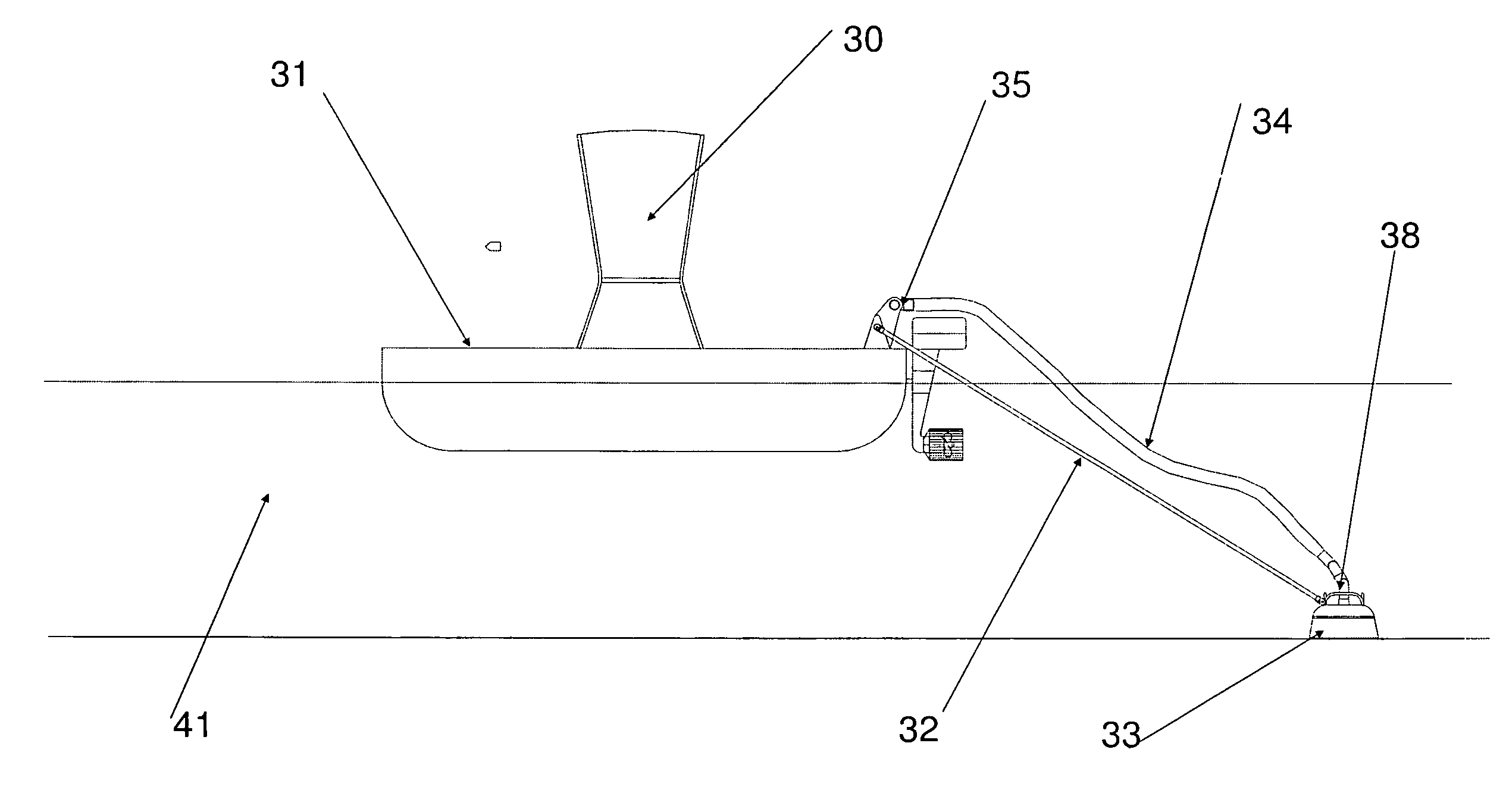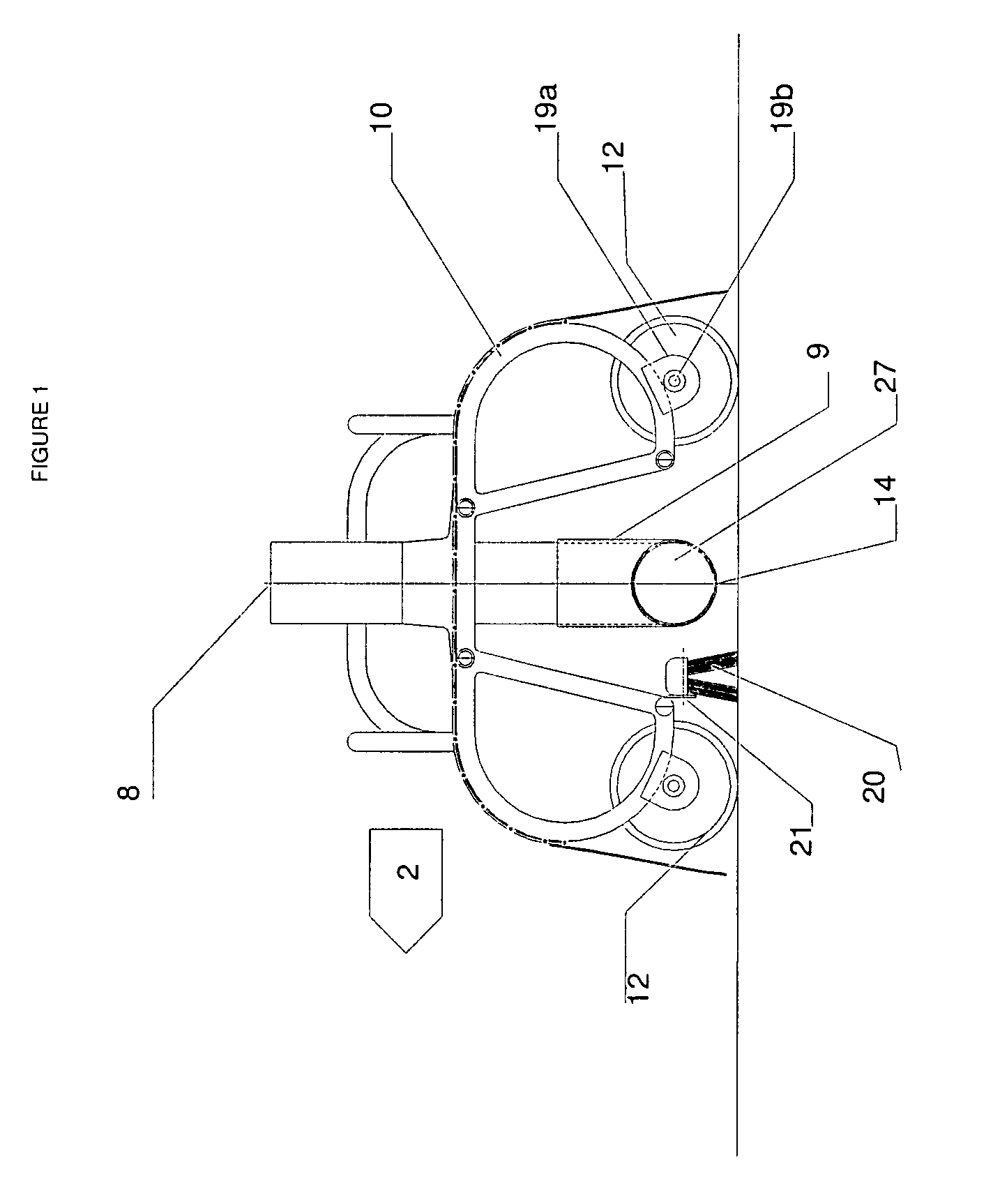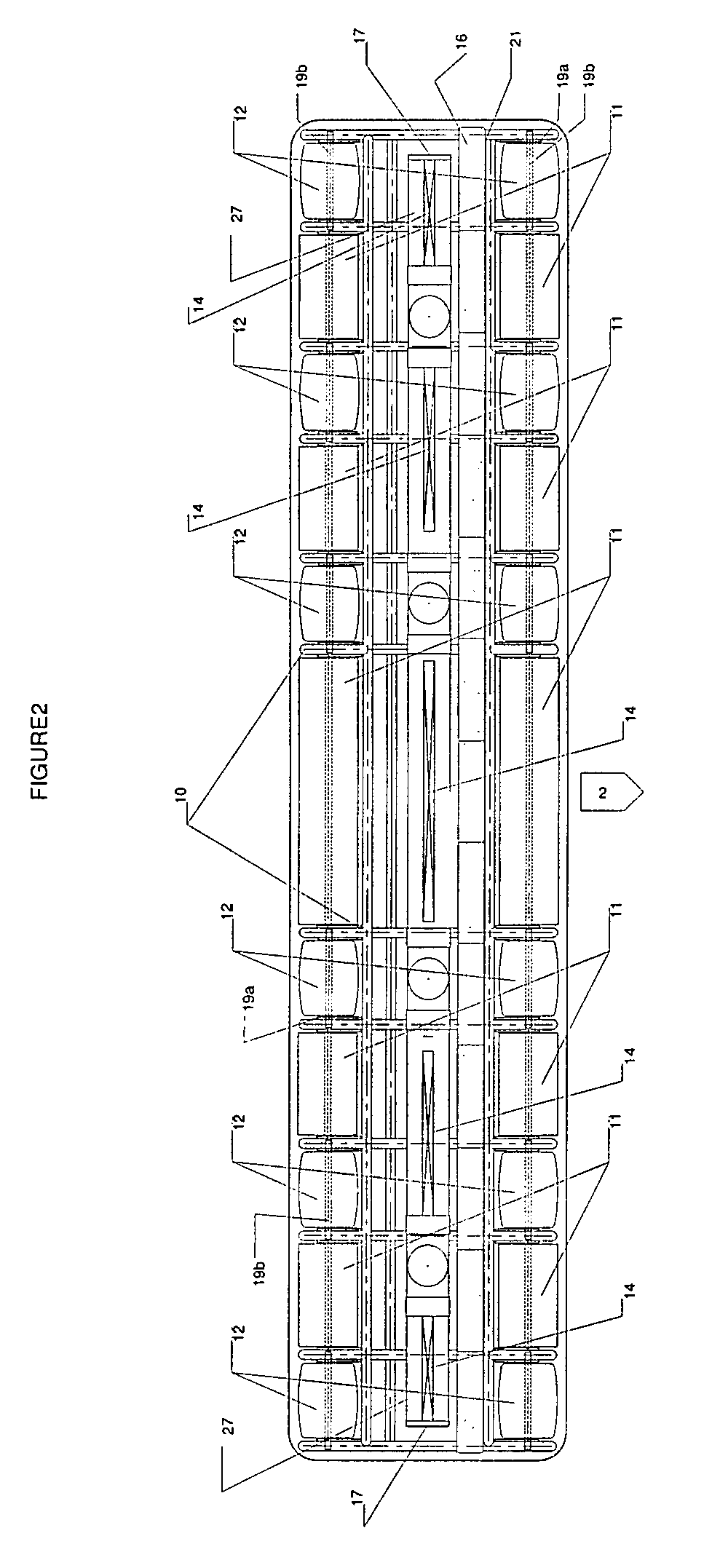Process to maintain large clean recreational water bodies
a technology for recreational water bodies and water bodies, applied in water cleaning, water/sewage multi-stage treatment, separation processes, etc., can solve the problems of water starting to deoxygenate, water dissolved oxygen concentrations falling, and anaerobic metabolism being much slower
- Summary
- Abstract
- Description
- Claims
- Application Information
AI Technical Summary
Benefits of technology
Problems solved by technology
Method used
Image
Examples
application example
[0109]To carry out the process of the invention to implement and maintain water bodies larger than 15,000 m3 for recreational use with color, transparency and cleanness characteristics similar to swimming pools or tropical seas at low cost, the following steps or stages were performed:
[0110]A structure similar to an artificial lagoon was built in the central Chilean shore, having a length of 1 kilometer, an area of 80,000 m2 and a volume of 250,000 m3 (33″20′59.91″S; 71″39′10.10″W). The bottom was built using clay and bentonite, and it was lined with lineal low density polyethylene (LLDPE) and high density polyethylene (HDPE) plastic with white and yellow color. The walls were built in cement and clay and lined with LLDPE and HDPE membranes.
[0111]Minimal and maximal depths were 1.2 and 3.5 meters, being 2.8 meters the average depth.
[0112]A pipe system of 100 to 250 mm diameter was installed all around the lagoon borders to facilitate recycling. The system has homogeneously distribut...
PUM
| Property | Measurement | Unit |
|---|---|---|
| oxidation-reduction potential | aaaaa | aaaaa |
| temperature | aaaaa | aaaaa |
| temperature | aaaaa | aaaaa |
Abstract
Description
Claims
Application Information
 Login to View More
Login to View More - R&D
- Intellectual Property
- Life Sciences
- Materials
- Tech Scout
- Unparalleled Data Quality
- Higher Quality Content
- 60% Fewer Hallucinations
Browse by: Latest US Patents, China's latest patents, Technical Efficacy Thesaurus, Application Domain, Technology Topic, Popular Technical Reports.
© 2025 PatSnap. All rights reserved.Legal|Privacy policy|Modern Slavery Act Transparency Statement|Sitemap|About US| Contact US: help@patsnap.com



